Keeping our furry friends healthy and happy is a top priority for any dog owner. We often go the extra mile to ensure our pets have the best food, regular vet visits, and ample playtime. However, sometimes the very environment we create for them can inadvertently cause them harm. It’s surprising how many common household items could be causing your dog allergies and sabotaging their well-being. Let’s dive into the 13 unexpected culprits lurking in your home that might be affecting your beloved pet’s health.
1. The Cozy Couch They Love to Lounge On
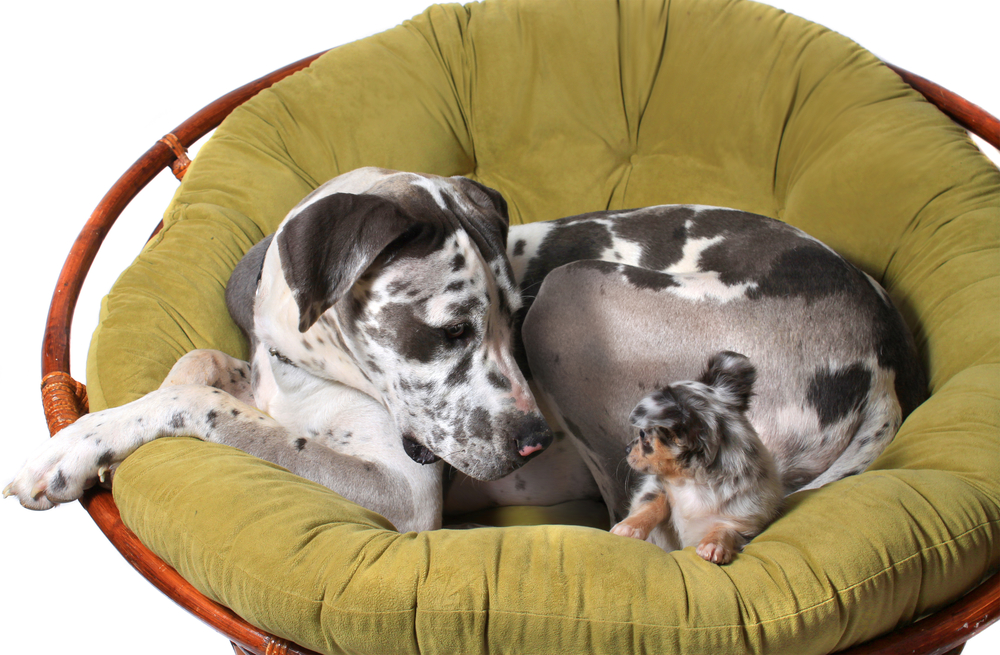
Your dog likely spends a lot of time lounging on the couch, which might be more than just a comfort zone. The fabric on your couch can harbor dust mites, which are a common allergen not just for humans but dogs too. Dust mites thrive in warm, humid environments, making upholstered furniture a perfect breeding ground. According to the American Kennel Club, these tiny creatures can cause itching and respiratory issues in dogs. Regular vacuuming and steam cleaning can help reduce the dust mite population, but sometimes switching to leather or synthetic materials that don’t trap allergens as easily can be the best solution.
It’s also important to wash your dog’s bedding frequently, as this is another hot spot for dust mites to accumulate. Consider hypoallergenic covers that can help minimize their exposure. Keeping humidity levels in check with a dehumidifier can also make your home less inviting to these pests. While it might seem like a lot of effort, reducing dust mites can significantly improve your dog’s quality of life. If your dog is still experiencing symptoms, consult with a vet for further advice, as they may suggest allergy testing.
2. The Cleaning Supplies Under the Sink
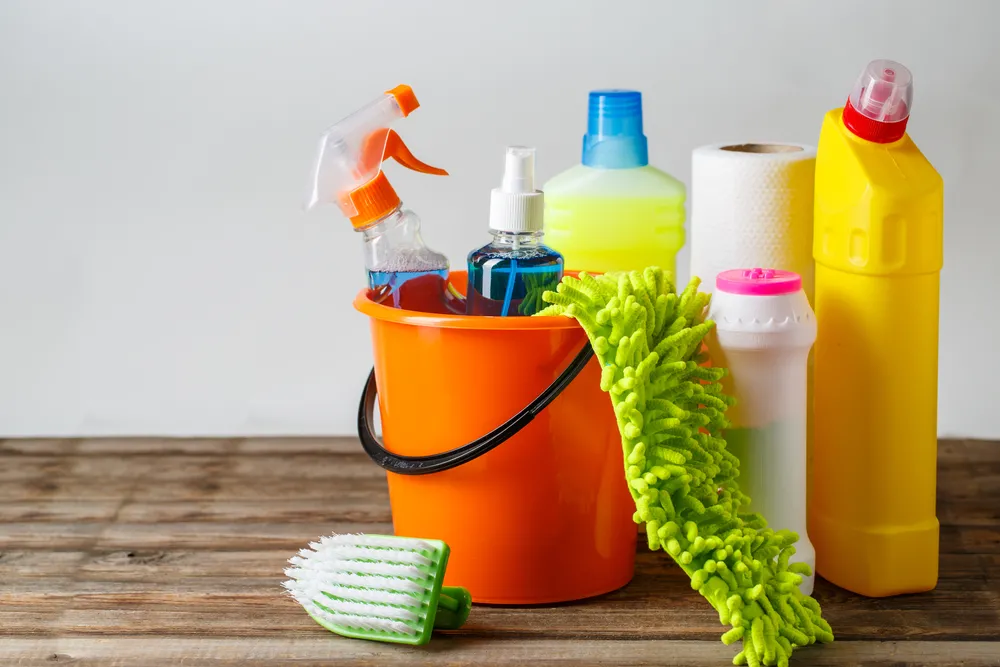
We all want our homes to be clean and fresh, but many common cleaning supplies contain harsh chemicals that can irritate your dog’s skin and respiratory system. Ingredients like ammonia, chlorine, and formaldehyde are often found in household cleaners and can be toxic to pets. If you’ve noticed your dog sneezing, itching, or showing signs of respiratory distress after you clean, your products might be the culprit. It’s essential to switch to pet-safe cleaning solutions that are free from harmful chemicals.
Many pet-friendly cleaning products are available that use natural ingredients and are just as effective at maintaining a spotless home without putting your dog at risk. Moreover, always ensure your dog is in a different room when you’re cleaning, and well-ventilate the area to dissipate any lingering fumes. If your dog has come into contact with a cleaning agent and is showing signs of an allergic reaction, rinse the area with water and contact your vet immediately. Prevention is always better than cure, so make the switch to safer, dog-friendly cleaning alternatives.
3. The Well-Meaning Scented Candles

Scented candles can create a cozy atmosphere, but they might not be as comforting for your dog as they are for you. Many scented candles and air fresheners contain synthetic fragrances and chemicals like phthalates, which can be harmful to pets. When these candles are burned, they release volatile organic compounds (VOCs) into the air, which can trigger allergic reactions in dogs. According to PetMD, symptoms can range from respiratory issues to skin irritations.
Consider opting for candles made from natural soy or beeswax and using essential oils with caution. Not all essential oils are safe for dogs, so it’s crucial to do some research before using them in your home. You might also try alternative methods for freshening up your space, such as using an essential oil diffuser with pet-safe oils or simply opening windows for natural ventilation. Maintaining good air quality is vital for your pet’s health, so make the switch to safer options and monitor your dog’s reactions to ensure they are comfortable.
4. The Dusty Curtains and Blinds
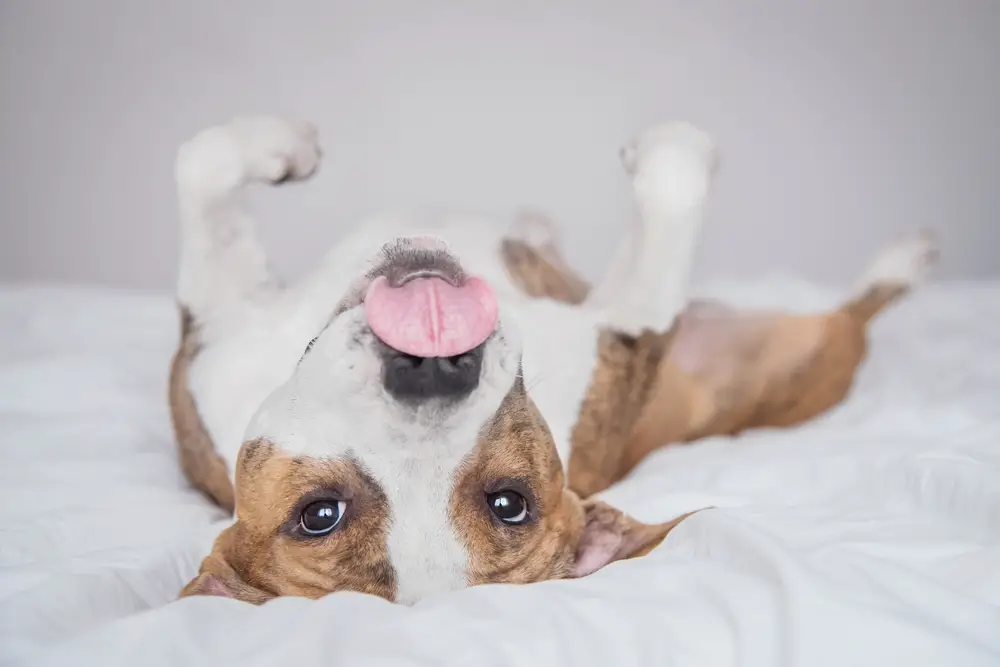
When was the last time you cleaned your curtains and blinds? These often-overlooked home fixtures can collect a surprising amount of dust and allergens. Dust particles can cause itching and sneezing in dogs, just as they do in humans. If you notice your dog rubbing their face or sneezing more often, it might be time to give your window treatments a thorough cleaning. Consider washing fabric curtains regularly and wiping down blinds with a damp cloth to remove dust buildup.
In addition to regular cleaning, you might consider investing in hypoallergenic window treatments. Materials that repel dust rather than attract it can significantly reduce the allergen load in your home. Also, keep windows closed during peak pollen seasons to prevent outdoor allergens from entering your home. Your dog will thank you for the extra effort in keeping their environment clean and allergen-free.
5. The Food Bowl You Use Every Day
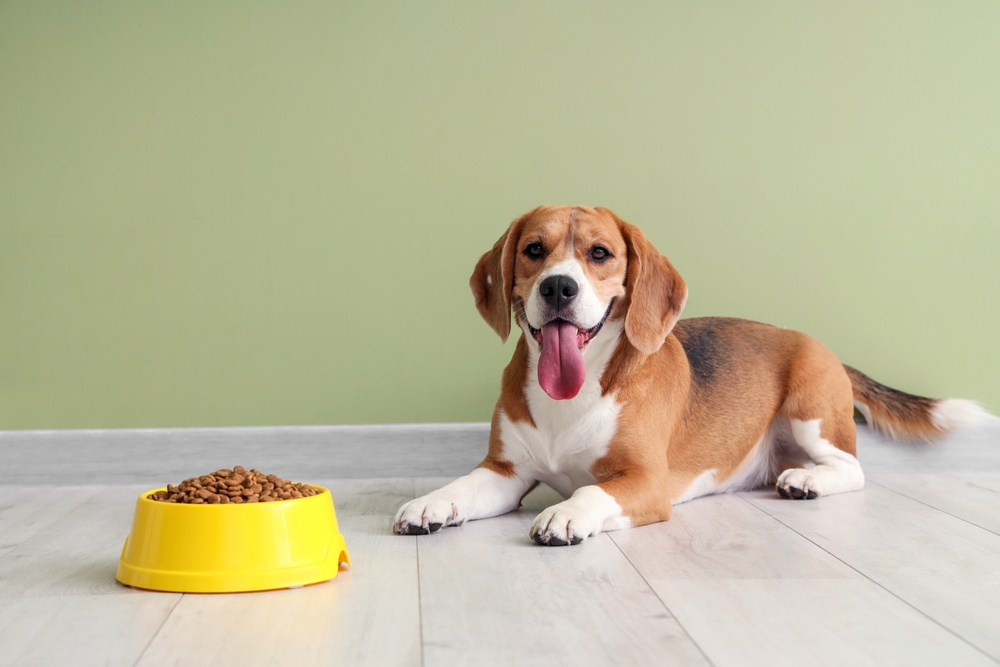
We often focus on what food we’re giving our dogs but overlook the importance of their food bowls. Many bowls, especially plastic ones, can harbor bacteria and cause allergic reactions. Over time, plastic can develop small scratches that become breeding grounds for bacteria, potentially leading to skin breakouts around your dog’s mouth. Switching to stainless steel or ceramic bowls, which are easier to clean and less likely to harbor bacteria, can make a world of difference.
Regularly cleaning your dog’s bowl with hot, soapy water can prevent the buildup of bacteria and ensure your dog’s mealtime is safe. Additionally, some dogs may have a contact allergy to certain materials like plastic, so selecting a high-quality, non-toxic alternative can alleviate symptoms. Always ensure the bowl is thoroughly rinsed and dried before refilling it with food or water. Your pup’s health starts at their bowl, so prioritize cleanliness and choose the right material.
6. The Plants Adorning Your Living Space

Indoor plants can brighten up your home, but some can be harmful to dogs. Plants like lilies, azaleas, and philodendrons are toxic to pets and can cause allergic reactions or more severe health issues if ingested. Even non-toxic plants can collect dust or mold, which can trigger allergies. It’s crucial to research which plants are safe for your furry friend and to keep potentially harmful ones out of reach.
Consider opting for pet-friendly plants that can still beautify your home without the risk. Spider plants, Boston ferns, and bamboo palms are great options that are safe for pets. Regularly wipe down plant leaves to remove dust and prevent mold growth. Creating a safe and healthy environment for your dog means considering every aspect of your home, including your greenery.
7. The Carpet Beneath Their Paws
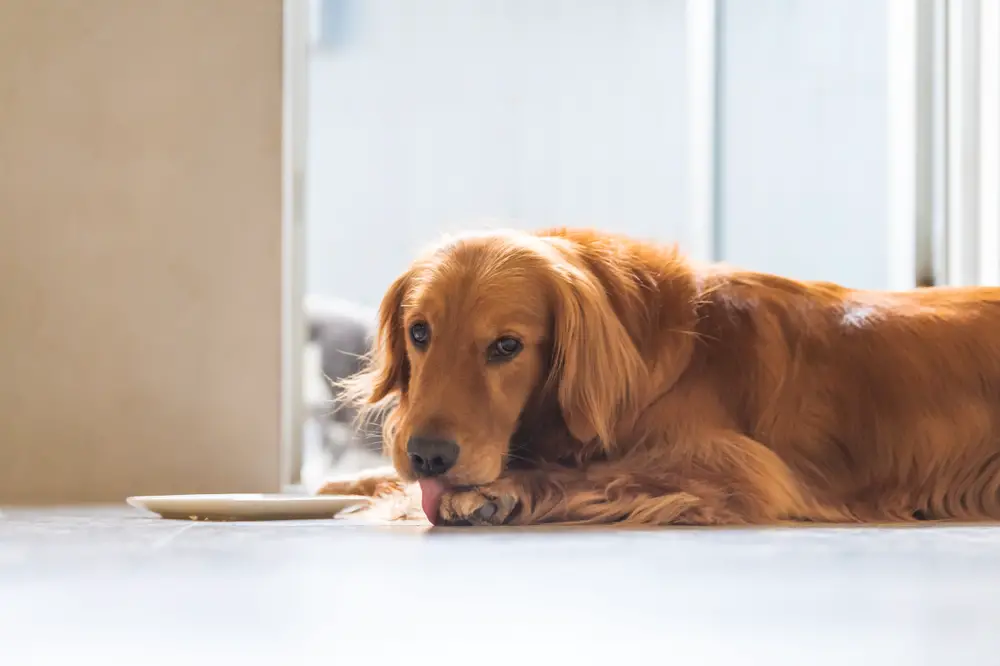
Carpets add warmth and comfort to a home, but they can also be a significant source of allergens for dogs. They trap dust, dander, pollen, and even mold, which can all contribute to your dog’s allergies. Regular vacuuming with a pet-specific vacuum cleaner can help reduce these allergens, but it’s often not enough. Consider steam cleaning your carpets periodically to remove deep-seated dirt and allergens more effectively.
You might also think about replacing wall-to-wall carpeting with hard flooring options like wood or tile, which are easier to keep allergen-free. Area rugs can provide comfort without the allergen load and are easier to clean or replace. Remember, a clean floor is a healthy floor for your dog, so take the time to maintain a cleaner environment for your pet to play and rest on. Their paws and health will benefit from it.
8. The Shampoo Used During Bath Time

Bathing your dog is essential for their hygiene, but the wrong shampoo can cause more harm than good. Many commercial dog shampoos contain chemicals and fragrances that can irritate your dog’s skin. If your dog is scratching excessively after bath time, it might be time to switch to a hypoallergenic, fragrance-free shampoo. These options are gentler on the skin and can help alleviate unnecessary irritation or allergic reactions.
It’s also important to follow up with a conditioner to help maintain a healthy coat and skin pH balance. Always thoroughly rinse off shampoo and conditioner to prevent residue buildup, which can also cause irritation. Consult with your vet for recommendations on the best products for your dog’s specific needs. Bath time should be a pleasant experience for your pet, so choose products wisely to keep their skin and coat healthy.
9. The Laundry Detergent on Their Favorite Blankets
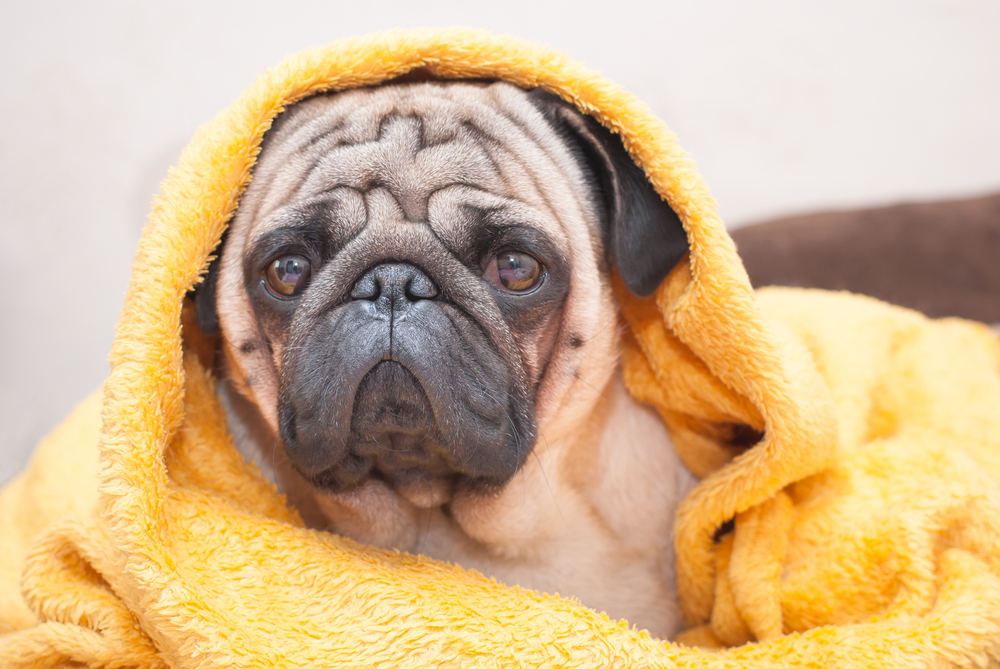
Your dog’s favorite blanket or bed cover might be a source of comfort but also a source of allergens. Laundry detergents with strong fragrances or harsh chemicals can leave residues that irritate your dog’s skin. If you’ve noticed your dog scratching more than usual, consider switching to a hypoallergenic detergent. Opt for products that are free from dyes and perfumes to reduce the risk of allergic reactions.
Additionally, consider adding an extra rinse cycle to ensure all detergent residues are removed. Regularly washing your dog’s bedding can help keep allergens, dust, and dander at bay. Creating a safe sleeping environment is just as important for your dog as it is for you. Make laundry choices that prioritize their comfort and health, ensuring they rest easy on freshly laundered, allergy-free bedding.
10. The HVAC System Circulating Air

Your home’s HVAC system plays a crucial role in maintaining air quality, but it can also circulate allergens throughout your home. Dust, pollen, and other irritants can accumulate in air ducts and filters. If your dog is experiencing respiratory issues, it might be time to check your HVAC system. Regularly changing air filters and scheduling duct cleanings can help reduce the allergen load in your home.
Consider investing in a high-efficiency particulate air (HEPA) filter, which can trap smaller particles that other filters might miss. Good airflow and ventilation can significantly improve indoor air quality, allowing your dog to breathe easier. It’s also wise to conduct regular maintenance checks to ensure your system operates efficiently and doesn’t exacerbate allergens. A cleaner, well-maintained HVAC system can transform your home into a healthier environment for your furry friend.
11. The Backyard Oasis You Share

Your backyard is a place of freedom and fun for your dog, but it can also be a source of allergens. Grass, pollen, and certain plants can trigger allergic reactions in sensitive pets. If your dog is experiencing itchy skin or watery eyes after playing outside, it might be time to investigate your backyard’s flora. Identifying and removing problematic plants can help reduce your dog’s exposure to allergens.
Regularly mowing the lawn and trimming bushes can also help keep pollen levels in check. Consider creating a “pet-friendly” garden by selecting plants known to be safe and non-allergenic for dogs. A little landscaping can go a long way in ensuring your dog enjoys the outdoors without discomfort. Ensuring your backyard is a safe haven can provide peace of mind while allowing your pet to enjoy their favorite outdoor activities.
12. The Toys They Love to Chew
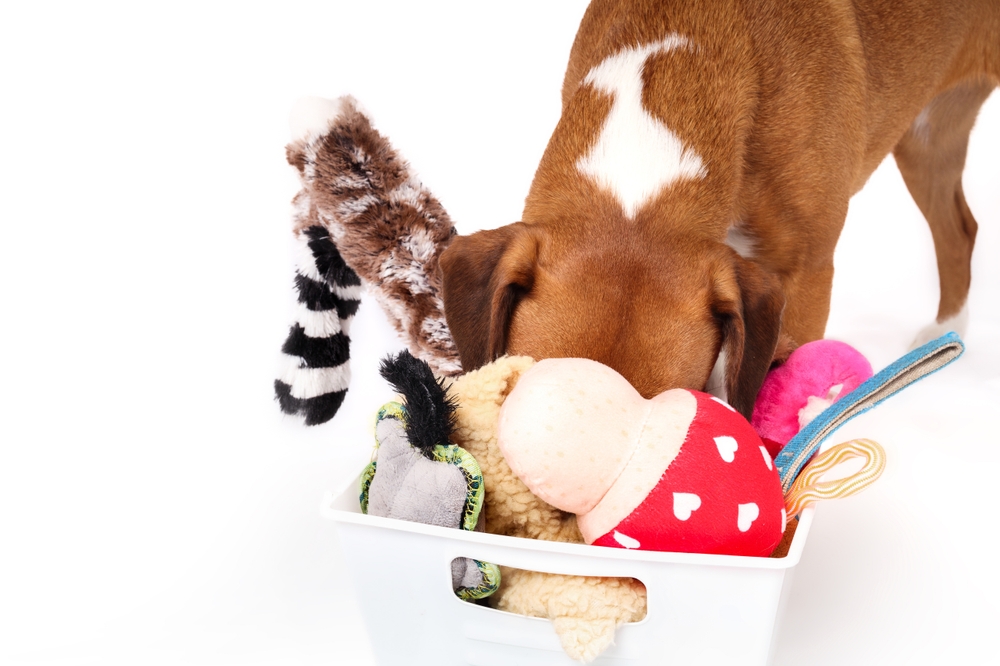
Toys are a vital part of your dog’s life, providing entertainment and mental stimulation. However, some toys are made from materials that can cause allergies or skin irritations. If your dog is experiencing mouth or skin issues, their toys might be to blame. Opt for high-quality, non-toxic toys made specifically for dogs, and avoid those with dyes, harsh chemicals, or small parts that can break off easily.
Regularly clean your dog’s toys to prevent the buildup of saliva, dirt, and bacteria, which can also contribute to allergic reactions. Rotating toys can also help keep them clean and exciting for your pet. A little attention to your dog’s toys can prevent unnecessary health issues and ensure they have safe and enjoyable playtime. Their health and happiness are worth the extra effort in maintaining their toy collection.
13. The Flea Treatments You Rely On
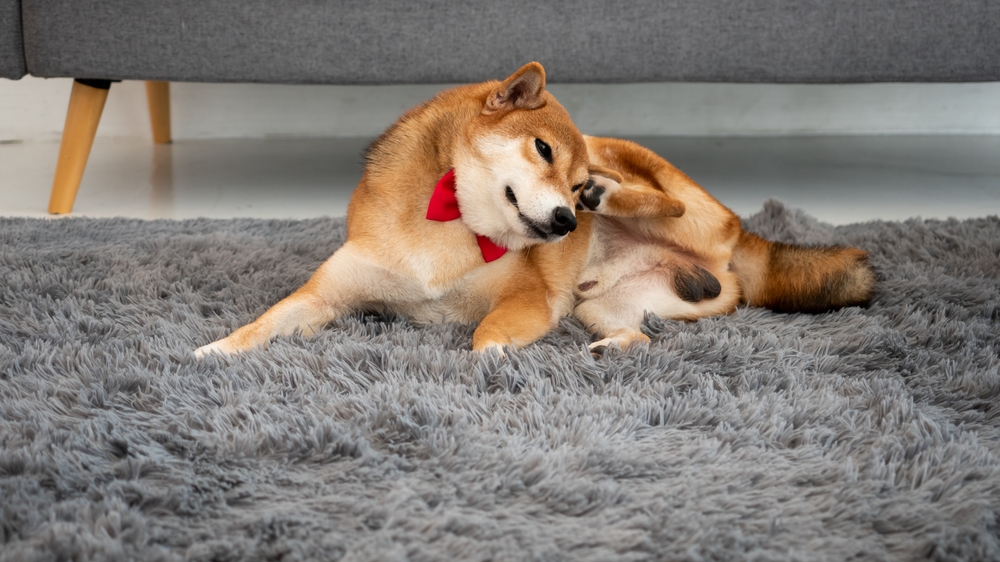
Flea prevention is crucial, but some treatments can cause allergic reactions in dogs. Topical treatments, collars, and sprays can contain chemicals that irritate sensitive skin. If your dog is scratching more than usual after flea treatment, it might be the product causing the reaction. Consult with your vet about alternative options such as oral medications that might be better suited for your pet.
Always follow the recommended dosage and application instructions to avoid overexposure to chemicals. Testing a small area first can help determine if your dog has a sensitivity to the treatment. Your vet can also suggest natural flea prevention methods that pose less risk of allergies. Ensuring effective and safe flea control can prevent irritation and keep your dog comfortable and healthy.
